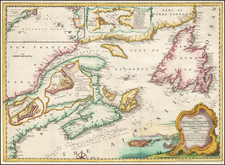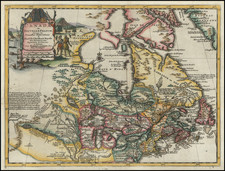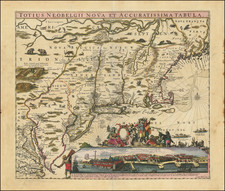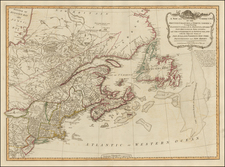Fine birdseye view of Poultney, Vermont, by L.R. Burleigh, lithographed by C,H, Vogt & Son in Cleveland, Ohio.
The view identifies 25 points of interest. Among the more charming features are the two covered bridges in the foreground, across the river.
One of the New Hampshire Grants, Poultney was charted on September 21, 1761, by Benning Wentworth, Royal Governor of New Hampshire, and named for William Pulteney, 1st Earl of Bath, a British politician and orator.
Poultney was first settled by Thomas Ashley and Ebenezer Allen. Ashley married Zeruiah Richards, and Allen married Lydia Richards, both daughters of Zebulon Richards of Windham County, Connecticut. Ashley and Allen established themselves in a cabin near the Poultney River on February 15, 1771.
The town grew slowly at first because of the unresolved conflict between New York and New Hampshire over land ownership in Vermont. The Great List of Freemen in Poultney, in 1781, contains the names of only 88 men. Most of the early settlers of the town came from Connecticut and Massachusetts.
All the males in Poultney were supporters of the American Revolution (with one exception), and most served in the army at various times during the American Revolutionary War. In 1777, Poultney was threatened with invasion by the British, and the men of Poultney left to answer the call to arms. The women and children of Poultney fled the town on July 8, 1777, in the face of Gen. John Burgoyne's army which was advancing from the north. Most families returned to their former Massachusetts and Connecticut houses during this period of unrest. After Burgoyne's defeat, the villagers returned to Poultney during spring of the following year.
A grist mill was built in 1777, and the village grew up around this mill. There are many buildings of historic interest in east Poultney. Among these are the Eagle Tavern dating to 1780, the Federal style Baptist church built in 1805 by master builder Elisha Scott, and the 1823 Horace Greeley House.











![[ Temperance Allegorical View ] Black Valley Railroad. Tickets Sold at all Liquor Shops. Accidents by Collisions are Entirely Avoided, as no up Trains are Run Over the Road.](https://storage.googleapis.com/raremaps/img/small/101469.jpg)


